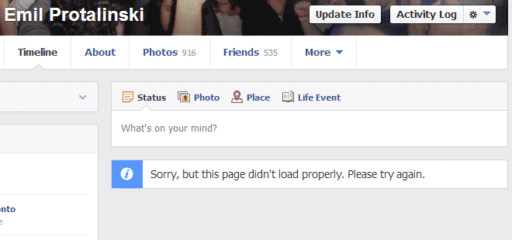After feeling intense heat from its users regarding recent changes to its privacy policy, Facebook brought some new security settings Wednesday. The streamlined settings are intended to help users better understand and more easily manage the information that they share and handle.
In an announcement Wednesday afternoon, Facebook founder Mark Zuckerberg admitted that, “A lot of what we were trying to do, we didn’t communicate.” Zuckerberg, a proponent of “openness” and sharing, told reporters he’s trying to join these two ideas with more privacy.
“The number-one thing we’ve heard is that there just needs to be a simpler way to control your information,” Zuckerberg wrote in a statement. “We’ve always offered a lot of controls, but if you find them too hard to use, then you won’t feel like you have control. Unless you feel in control, then you won’t be comfortable sharing, and our service will be less useful for you.”
Facebook has done some serious streamlining. Among the changes:
- It reduced the number of settings required to make all information private from nearly 50 to fewer than 15.
- Consolidated 10 settings on three separate pages into seven settings on one page.
- Reduced the number of separate pages in the privacy center from 13 to 8.
The new privacy controls, which are rolling out gradually over the next several weeks, focus on three items: a single control for your content; more powerful controls for your basic information; and an easy way to turn off all applications. Here’s what you need to know.
Managing Your Facebook Content
Sharing on Facebook: The first new control helps you set who can see the content you post. This includes your status updates and photos, as well as your birthday and contact information, comments on your posts, and photos in which you’ve been tagged.
With a few clicks, you can set the content you’ve posted to be open to everyone, friends of your friends, or just your friends. The granular controls—such as restricting individual people or lists from viewing content—will still be available. You’ll find this under “Customize settings.”
Additionally, when you specify a control for this section, Facebook will use it as a precedent when it launches new products in the future. For example, if you set this control to share content with only your friends, future settings will be set only to friends so you don’t have to worry about making changes.
Managing Your Basic Information
Basic Directory Information: Facebook also reduced the amount of basic information that must be visible to everyone. Before, your friends and pages were public information. Now, you have the ability to control who can view these.
Information that will remain public includes: your name, profile picture, gender and networks. Other information, including your hometown and activities, will be visible by default.
Controlling Applications and Websites
Applications and Websites: The last privacy control Facebook unveiled helps you control whether applications and websites (including search engines) can access any of your information. If you don’t use any Facebook games or applications, you can choose to turn off “Platform” entirely. This will ensure that none of your information is shared with applications or websites.
Facebook also is addressing another pain point: instant personalization. Now, partner sites can only see things you’ve made visible to everyone. If you want to prevent them from seeing that data, Facebook is making it easier to turn it off completely.




